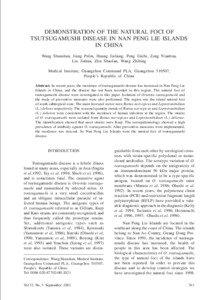<--- Back to Details
| First Page | Document Content | |
|---|---|---|
 Date: 2008-08-05 09:52:39Trombidiformes Rickettsioses Zoonoses Scrub typhus Orientia tsutsugamushi Leptotrombidium Orientia Rickettsia Trombiculidae Bacteria Rickettsiales Biology |
| First Page | Document Content | |
|---|---|---|
 Date: 2008-08-05 09:52:39Trombidiformes Rickettsioses Zoonoses Scrub typhus Orientia tsutsugamushi Leptotrombidium Orientia Rickettsia Trombiculidae Bacteria Rickettsiales Biology |